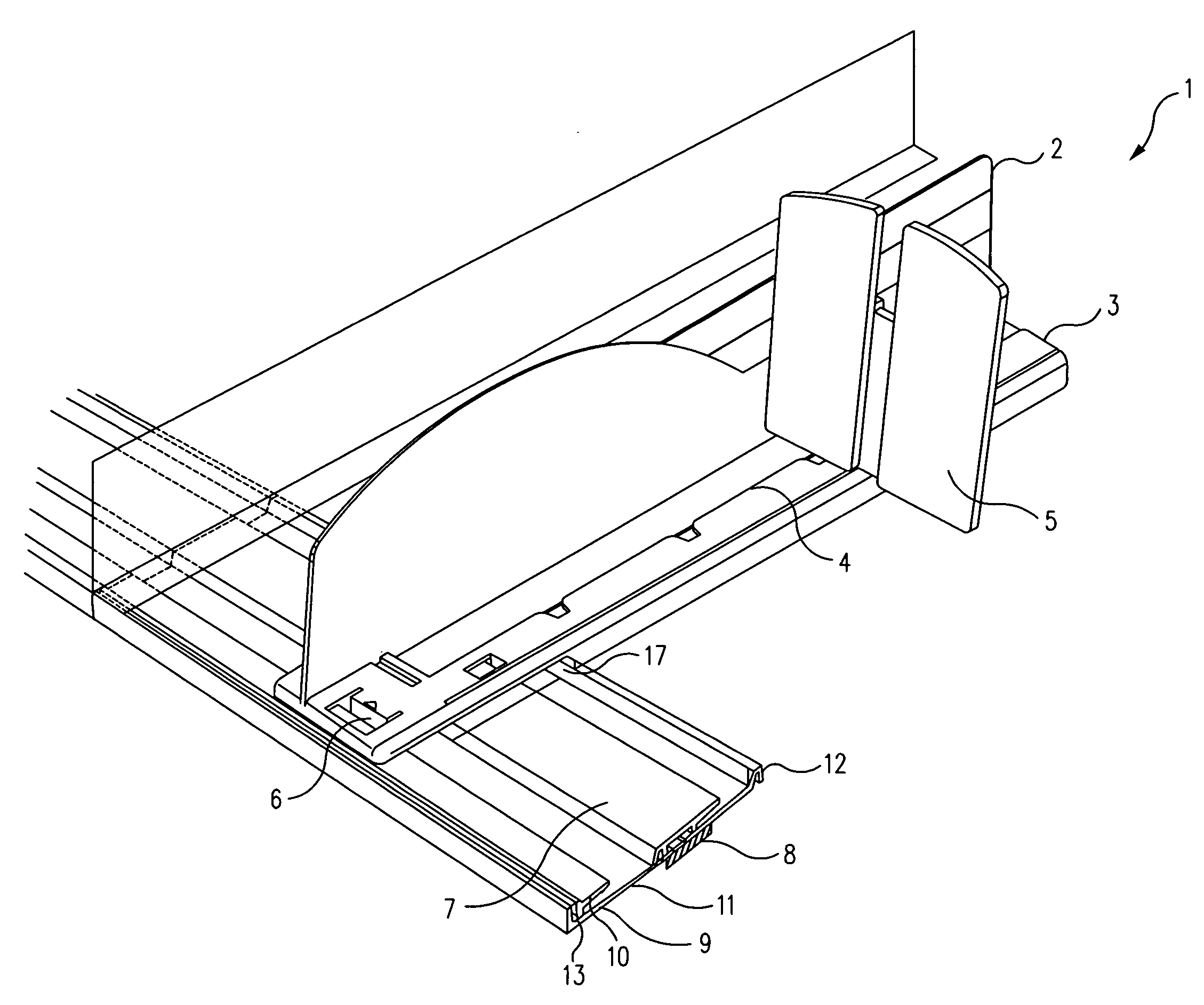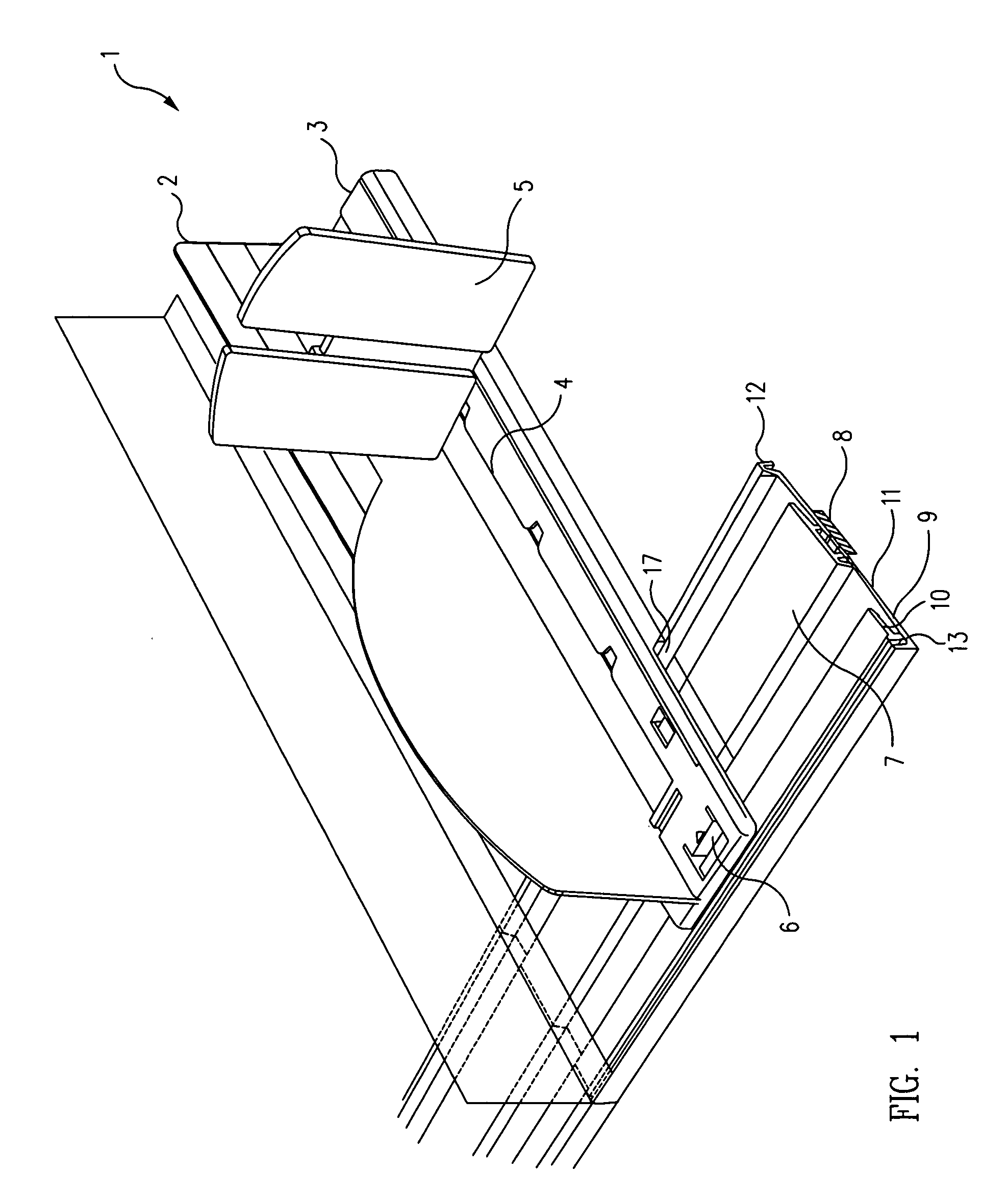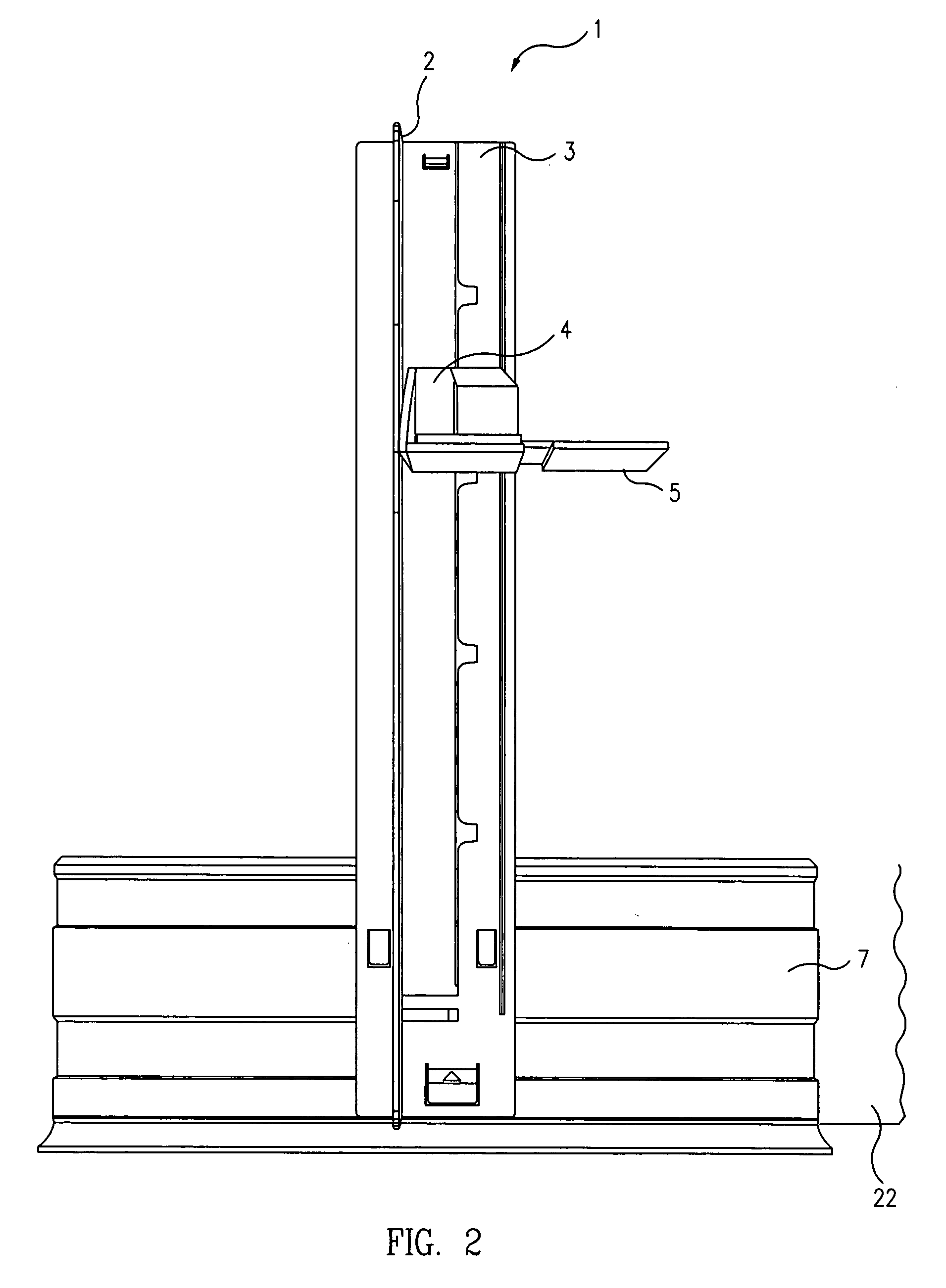Method and apparatus for selective engagement of shelf divider structures within a shelf management system
a shelf management system and divider technology, applied in the field of retail display divider structures, can solve the problems of limiting the ability of store personnel to conveniently move, change or restock the merchandising display scheme, display is prone to disarray, and not allowing convenient repositioning, so as to save time and labor.
- Summary
- Abstract
- Description
- Claims
- Application Information
AI Technical Summary
Benefits of technology
Problems solved by technology
Method used
Image
Examples
Embodiment Construction
[0020] Referring now to the drawings, shown are several illustrative, but not limiting, embodiments of the divider structure of the shelf management system according to the present invention.
[0021]FIGS. 1 and 4 show a first embodiment of a divider system 1, comprising a vertical divider wall 2, and horizontal divider base 3. The terms “vertical” and horizontal” are used herein to illustrate the relative orientation of system components in the figures but it should be understood that in use these components may be oriented on shelves which slope and thus are other than perfectly horizontal. Base 3 includes an “L”30 shaped extension (sometimes called a latch 14) with a protrusion 15 (not shown in FIG. 1 but shown in FIG. 4) and a recess 17 (FIG. 4) which cooperatively engage with and lock onto a generally horizontal mounting member 7. Mounting member 7 is attached to a shelf (not shown for simplicity in FIGS. 1 and 3 through 7 but shown as 22 in FIG. 8). Member 7 includes a horizonta...
PUM
 Login to View More
Login to View More Abstract
Description
Claims
Application Information
 Login to View More
Login to View More - R&D
- Intellectual Property
- Life Sciences
- Materials
- Tech Scout
- Unparalleled Data Quality
- Higher Quality Content
- 60% Fewer Hallucinations
Browse by: Latest US Patents, China's latest patents, Technical Efficacy Thesaurus, Application Domain, Technology Topic, Popular Technical Reports.
© 2025 PatSnap. All rights reserved.Legal|Privacy policy|Modern Slavery Act Transparency Statement|Sitemap|About US| Contact US: help@patsnap.com



